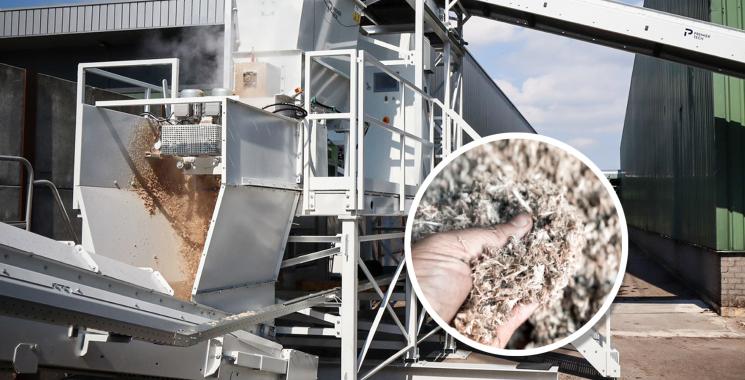Integrating Organic Soil Amendments into Farm Fertiliser Budgets
While there is general agreement within the farming and agronomic communities on the benefits of applying organic soil amendments, i.e. manures and composts for the fertility and health of agricultural soils, there is little understanding on how to effectively integrate the plant nutrient value of these products into existing farm nutrient budgets. Being left to their own devices, it can be difficult for growers to determine on which soil types, for which crops or in which situations across their farm they may gain the most advantage from using a particular type of product.
Year on year application of set rates of organic amendments, without consideration of soil nutrient content and crop nutrient use, can result in soil nutrient imbalances and are not consistent with the principles of good farming practices and environmental management. Farmers might have a feel for nutrient supply from raw or aged manures, but composted or digested products have very different characteristics to raw manures, and exhibit very different nutrient release patterns. Probably the most concerning aspect is that many farmers do not even try to account for nutrients supplied by using organic soil amendments.
Nutrient accounting made easy
These barriers, which are preventing farmers from accounting for the value of the nutrients in composts and other organic amendments, such as animal manures, are being addressed via a new, $3.5 million national research program funded through the federal Department of Agriculture’s Smart Farming Partnerships Program. Meat and Livestock Australia and a consortium of state government agencies (EPA NSW, Green Industries SA), the composting industry, commercial laboratories, and of course farming enterprises are also project partners. The project, led by the Queensland University of Technology and working with agronomists and researchers from La Trobe University, Deakin University (in NSW) and the University of Queensland, will develop a cross-industry, user-friendly decision support tool, i.e. an integrated nutrient calculator, that provides farmers with the true nutrient and fertiliser replacement value of organic soil amendments. This farmer-ready tool will calculate not just the total amount of nutrients contained in these products and supplied at a given application rate, but also provide the timing of nutrient supply over time and the subsequent potential for reducing mineral fertiliser inputs.
Farm testing the calculator
The recommendations generated by the calculator are demonstrated at 12 on-farm sites using 15 different commercially-available organic amendments. The trial and demonstration sites are located in some of Australia’s most productive agricultural regions and close to ready supplies of organic amendments. The field sites encompass Australia’s major agroecological climatic zones, soil types and industries. The Victorian vegetable cropping sites are located in Werribee and Baxter and the broadacre cropping site at Freshwater Creek. Additional sites are located in South Australia (Limestone Coast), New South Wales (Murrumbidgee Valley near Griffith and Wagga Wagga) and Queensland (Lockyer Valley, Darling Downs and Central South West). The farm types include intensive vegetables (x4), broad acre cropping (x4), fodder crops (x2) and cotton (x2), and the efficacy of organic amendments is being assessed using a standardised treatment and data collection protocol. These sites provide comprehensive on-farm demonstration to farmers on how to reduce mineral fertiliser input costs, while improving yield and soil health outcomes and reducing environmental impacts.
Farm testing the calculator
The aim of this work is to investigate the integrated use of various organic soil amendments within conventional crop nutrient programs. The field demonstration sites focus on the fertility and soil conditioning gains various organic amendments may offer, and, in combination with laboratory incubation trials, provide best nutrient supply estimates for these products. The project will develop nutrient calculator software and an App that will build on the AORA Compost Benefit Calculator and be compatible with major existing agricultural nutrient management programs. However, to improve the accuracy, predictability and also applicability of the nutrient calculator tool, it is necessary that many more existing and future datasets are fed into the tool’s ‘black box’. Looking to the future, the nutrient calculator app will allow farmers not only to estimate contributions of organic soil amendments to plant macro and micro nutrient requirements and associated fertiliser cost savings, but for example also to estimate liming effects, improved water status or potential soil carbon gains.
Contact the author
Johannes Biala
Telephone: 0409 062 613
Email: j.biala@uq.edu.au
